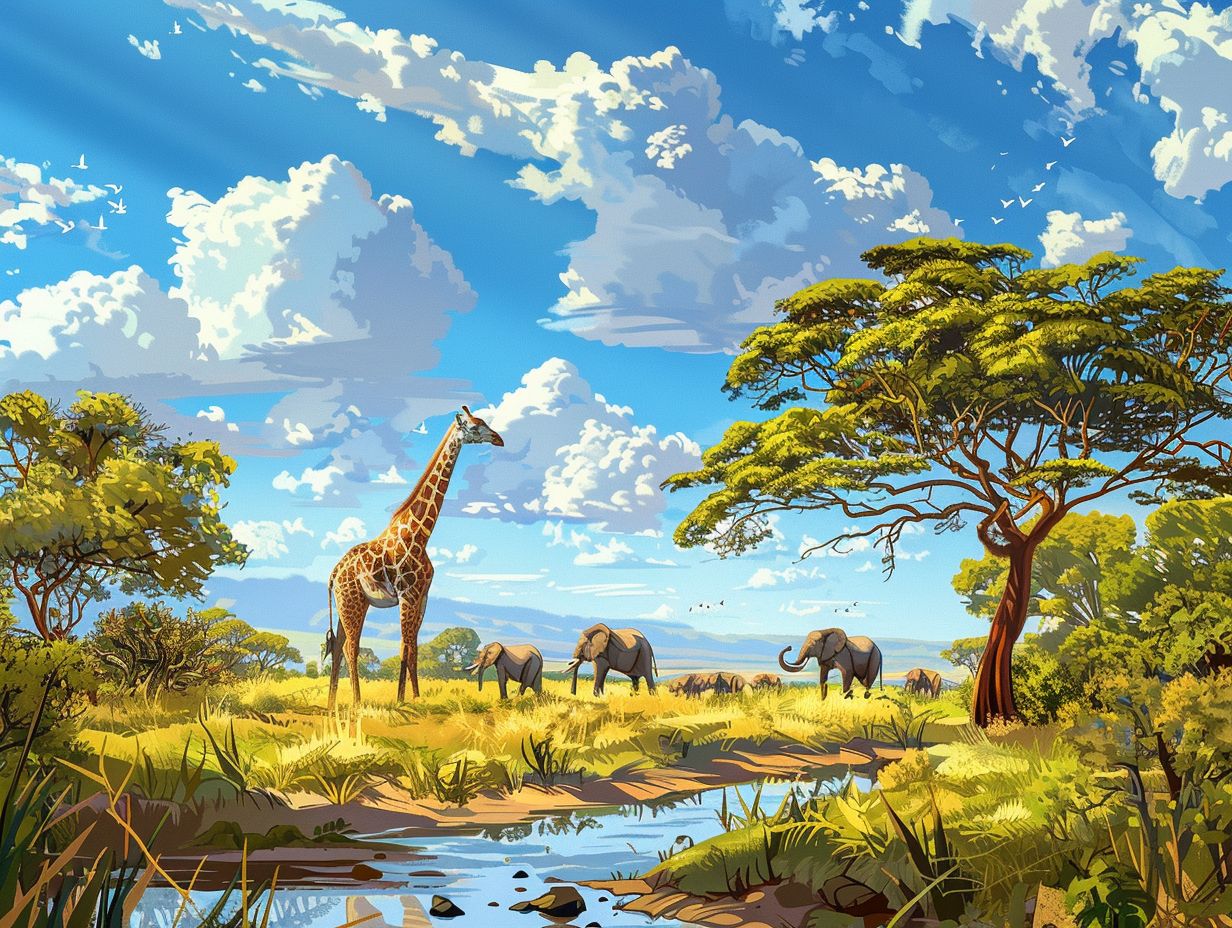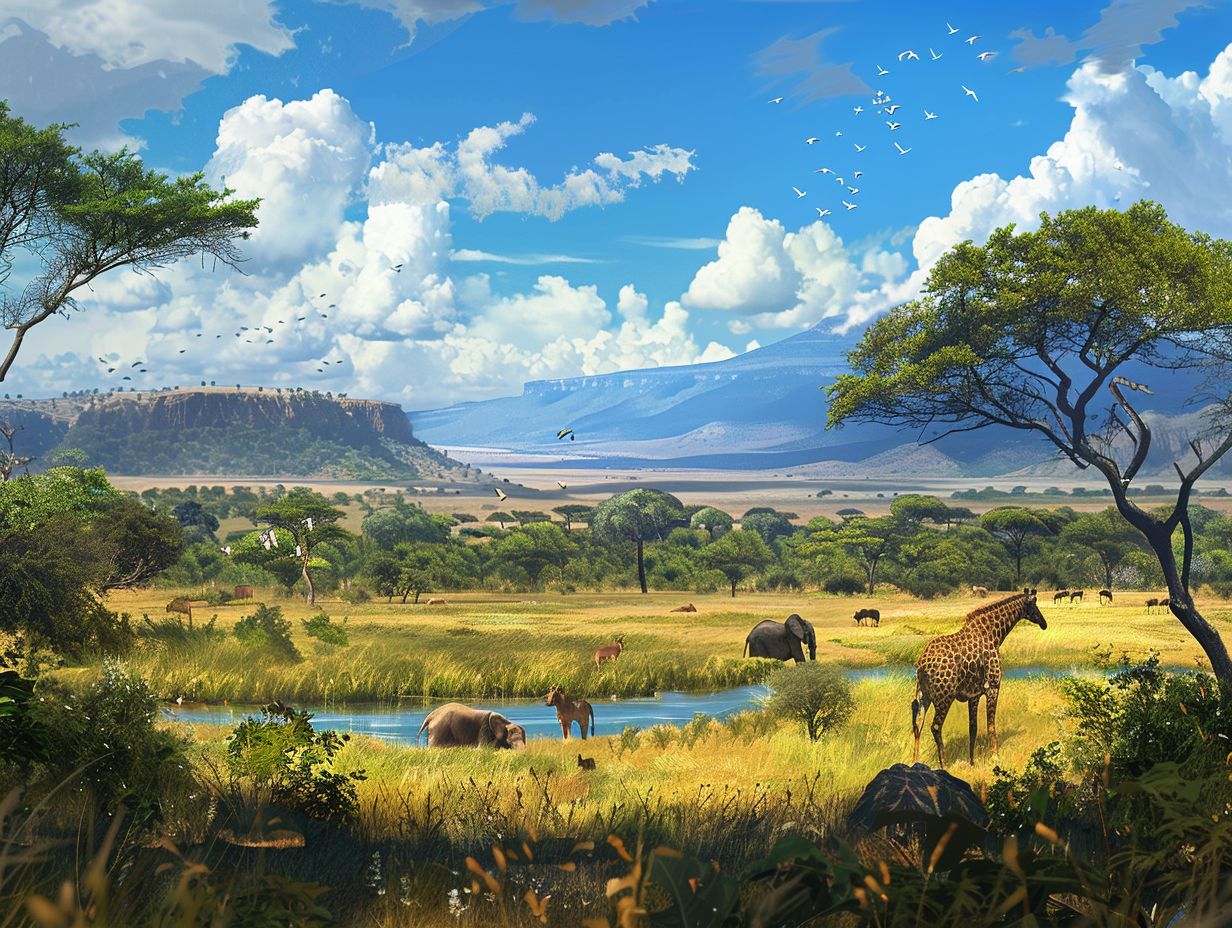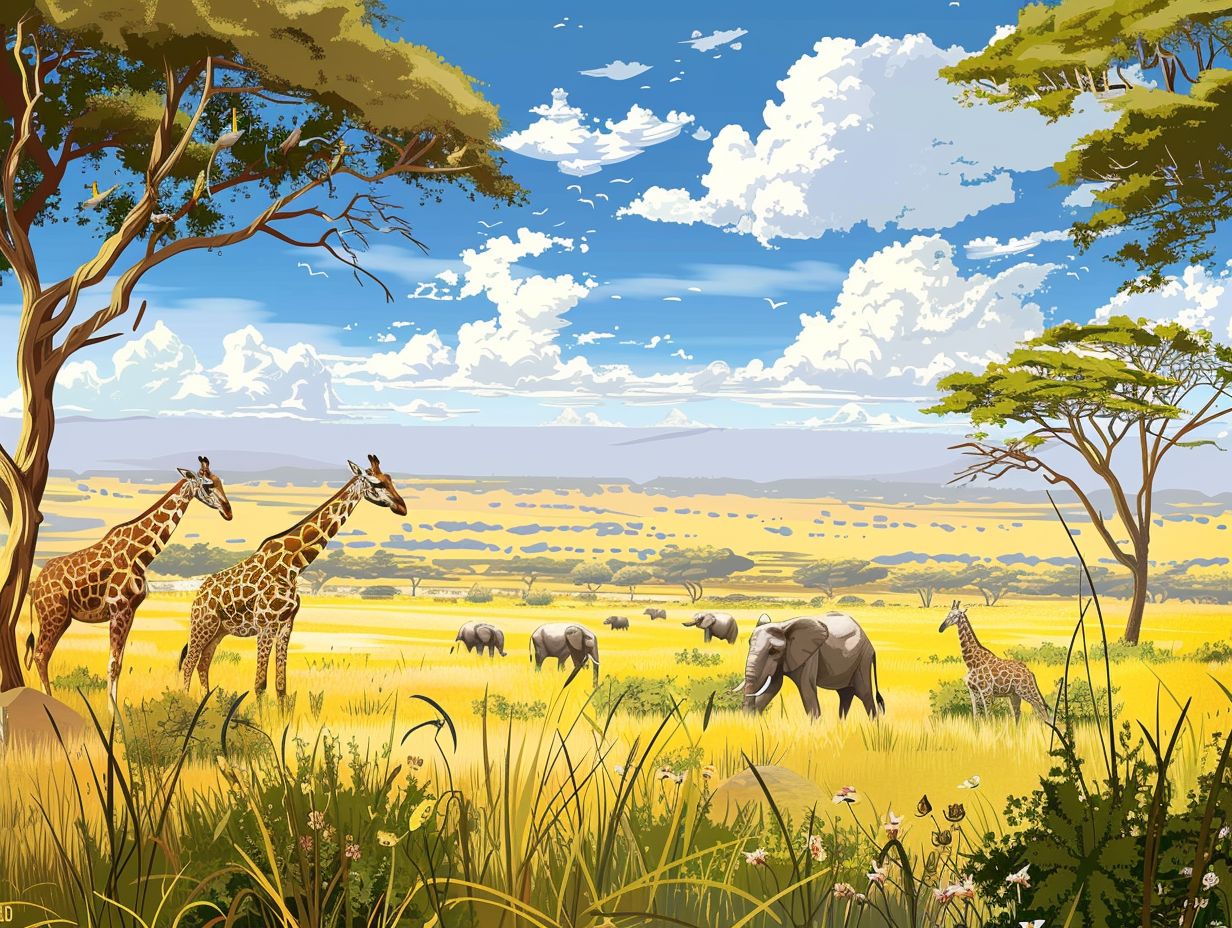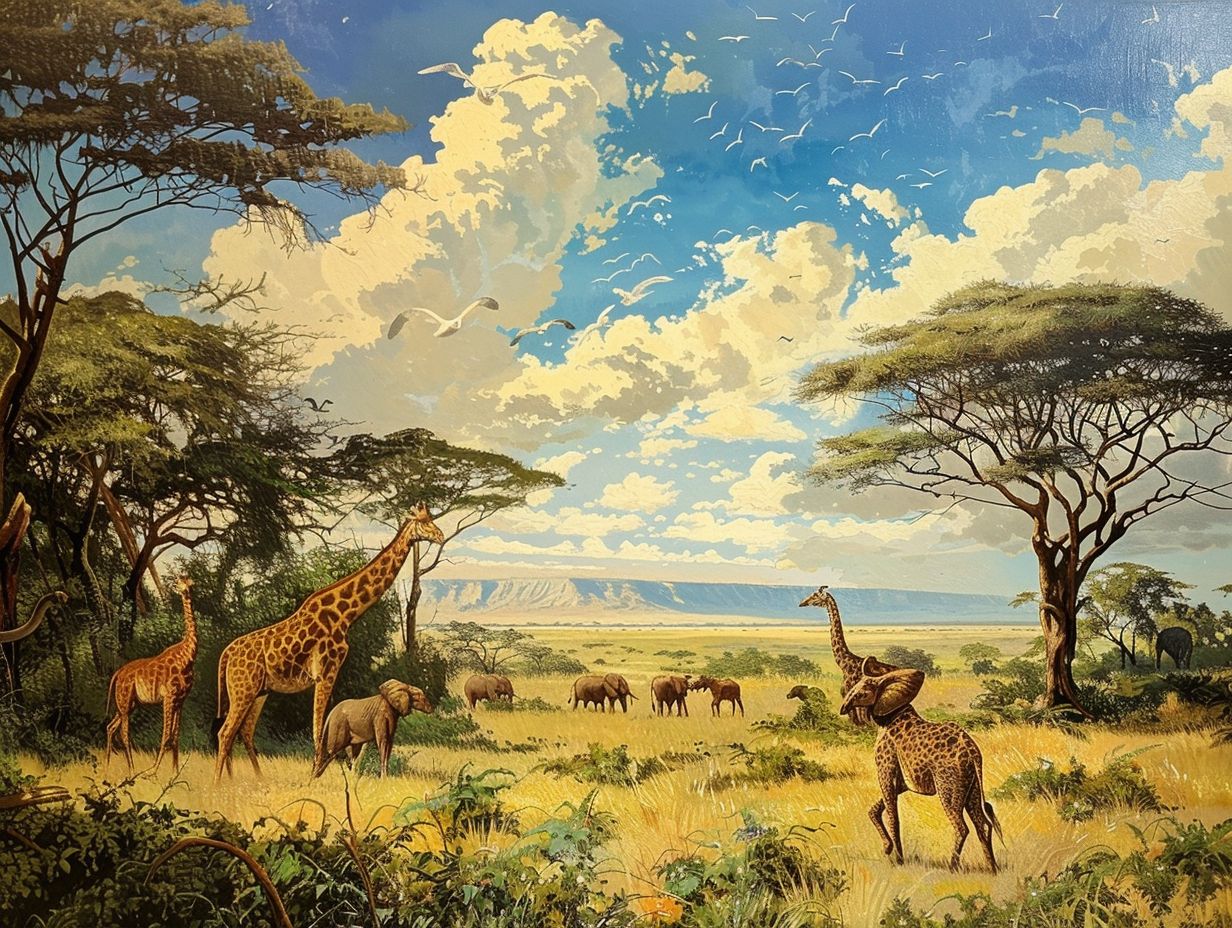
Safari Kenya Or Tanzania
Dreaming of an unforgettable safari experience in East Africa? Look no further than Kenya and Tanzania, two of the most popular safari destinations on the continent.
We will explore the main differences between these two countries, the best times to visit, top safari destinations, costs, types of safaris available, cultural experiences, wildlife viewing opportunities, and safety considerations.
Get ready to embark on a journey filled with adventure, wildlife, and culture in Kenya and Tanzania!
Key Takeaways:

- Both Kenya and Tanzania offer unique and diverse safari experiences, with differences in weather and costs being the main factors to consider when choosing between the two destinations.
- The best time to visit Kenya and Tanzania is during the dry season, with peak months being July to October. Visitors can expect to see a variety of wildlife and participate in cultural experiences in both countries.
- Visitors can choose from a range of safari options, including self-drive, guided, and luxury safaris, each offering a different level of comfort and interaction with local communities. It is important to take safety precautions when on safari in either country.
Overview of Kenya and Tanzania:
Kenya and Tanzania, located in East Africa, are renowned for their diverse wildlife, stunning landscapes, and vibrant cultures.
These countries offer an array of safari experiences, luxurious accommodations, and family-friendly lodges and camps. Travelers can witness the Great Migration in the Masai Mara and Serengeti, where millions of wildebeest and zebras cross the plains. Cultural experiences await at the Maasai villages in Kenya and the Hadzabe tribes in Tanzania, providing insights into traditional ways of life.
What Are the Main Differences Between Kenya and Tanzania?
When comparing Kenya and Tanzania for a safari experience, some key differences emerge. Kenya’s Masai Mara National Reserve is famed for its Wildebeest Migration, while Tanzania’s Serengeti National Park offers vast plains and the Ngorongoro Crater.
In terms of costs, Kenya tends to have higher-end lodges and camps, whereas Tanzania offers a blend of budget-friendly and luxury accommodations, catering to various traveler preferences.
Kenya’s cultural experiences often revolve around interactions with the Maasai people, known for their distinctive red attire and traditional way of life. On the other hand, Tanzania boasts a rich cultural tapestry with influences from Arab, Indian, and African heritage, offering diverse insights into local traditions and customs.
In terms of wildlife, both countries showcase the Big Five – lions, elephants, buffaloes, leopards, and rhinos, but Kenya sets itself apart with unique species like the Grevy’s zebra. Kenya’s Amboseli National Park is renowned for its breathtaking views of Mount Kilimanjaro, providing a picturesque backdrop for safari adventures.
What Are the Best Times to Visit Kenya and Tanzania?
Choosing the best time to visit Kenya and Tanzania largely depends on the weather patterns and wildlife activities. Both countries have distinct seasons that influence the safari experience. Understanding the seasonal variations in weather can enhance the chances of witnessing the Wildebeest Migration or exploring the iconic Big 5 in their natural habitats.
Kenya and Tanzania are blessed with a diverse climate. In Kenya, the dry season from late June to October is ideal for safari enthusiasts as wildlife congregates around water sources, making it easier to spot the magnificent elephants, lions, and other members of the Big 5.
On the other hand, Tanzania experiences the Great Migration, one of the most spectacular wildlife events on earth, from December to March, where millions of wildebeests and zebras cross the Serengeti. This spectacle is a true testament to the power and beauty of nature.
What Are the Differences in Weather Between Kenya and Tanzania?
The weather variations between Kenya and Tanzania can significantly impact safari experiences and outdoor activities. Kenya experiences diverse climates due to its topographical features, while Tanzania’s weather is influenced by the presence of Mount Kilimanjaro. Understanding these weather patterns is crucial for planning game drives, trekking adventures, or beach holidays in Zanzibar.
Kenya’s diverse landscapes, from savannahs to mountains, contribute to varying weather conditions. As a result, safari-goers might experience hot and dry weather in the Masai Mara National Reserve, while encountering cooler temperatures at higher altitudes near Mount Kenya.
On the other hand, Tanzania’s proximity to the equator brings a generally tropical climate, which is moderated by altitude variations. The presence of Mount Kilimanjaro adds an interesting element, as its snow-capped peaks can influence weather patterns in the surrounding regions, creating unique microclimates.
What Are the Top Safari Destinations in Kenya and Tanzania?
Kenya and Tanzania boast some of the most coveted safari destinations in East Africa, attracting wildlife enthusiasts and nature lovers from around the globe. From the iconic Masai Mara in Kenya to the legendary Serengeti in Tanzania, these regions offer unparalleled opportunities for game drives, wildlife sightings, and encounters with the Big 5 animals.
Embarking on a safari adventure in Kenya allows visitors to witness the annual wildebeest migration in the Masai Mara, where millions of hooves thunder across the plains in a breathtaking display of nature’s wonders. Travelers can marvel at the vibrant birdlife, including the striking lilac-breasted roller and majestic African fish eagle.
In contrast, exploring the Serengeti in Tanzania presents a chance to witness predators in action, such as lions on the hunt or cheetahs sprinting across the savannah. The vast grasslands provide a picturesque backdrop for unforgettable safari experiences.
What Are the Main Attractions in Each Destination?

Exploring the main attractions in Kenya and Tanzania reveals a tapestry of natural wonders and cultural heritage.
The Serengeti National Park in Tanzania is famed for the Great Migration, where millions of wildebeests and zebras stampede through the plains. On the other hand, Kenya’s Mount Kilimanjaro offers a challenging yet rewarding climb with breathtaking views from the summit.
Both countries boast vibrant markets and bustling cities like Arusha, known for its coffee, and Nairobi, a hub of bustling energy and intriguing history.
Immersing oneself in the local culture is a must-do, with opportunities to visit Maasai villages in Amboseli or experience traditional dance performances. A hot air balloon safari over the Mara River presents a bird’s-eye view of the vast landscapes and wildlife below, setting the stage for unforgettable memories.
What Are the Costs of a Safari in Kenya and Tanzania?
Understanding the costs associated with a safari in Kenya and Tanzania is essential for travelers planning their African adventure.
Both countries boast a variety of options for accommodations, ranging from luxurious lodges to intimate tented camps, each offering unique experiences and price points. Engaging in activities such as game drives, walking safaris, hot air balloon rides, or cultural visits can contribute to the overall cost of the safari. It is wise to carefully budget for these expenses while keeping in mind that certain seasons and destinations may impact prices. Considering package deals, group tours, or self-drive options can also help manage costs without compromising on the extraordinary safari experiences in these stunning destinations.
What Are the Differences in Costs Between Kenya and Tanzania?
When comparing the costs of safaris between Kenya and Tanzania, travelers may notice variations in accommodation prices, activity expenses, and overall budget requirements. Kenya’s lodges and camps tend to cater more towards luxury travelers, whereas Tanzania offers a mix of budget-friendly and high-end options, allowing visitors to choose experiences that align with their financial preferences.
In Kenya, luxury safari accommodation often comes with a higher price tag compared to Tanzania’s more budget-friendly alternatives, making it a favored choice for those seeking exclusive experiences.
Tanzania’s diverse range of options caters to a wider spectrum of travelers, from those on a tight budget to those looking for lavish escapes.
The costs of activities such as game drives, guided tours, and park fees also differ between the two countries. Kenya’s renowned national parks and reserves often command higher entry fees, while Tanzania’s offerings present a more affordable alternative without compromising on the wildlife viewing experience.9
What Are the Types of Safaris Available in Kenya and Tanzania?
Kenya and Tanzania offer a spectrum of safari experiences, ranging from self-drive adventures to guided expeditions and luxurious retreats. Travelers can choose the style of safari that best suits their preferences, whether it involves embarking on thrilling game drives, partaking in cultural activities, or indulging in premium amenities amidst the wilderness.
Self-drive safaris provide a sense of freedom as adventurers navigate their way through the savannah independently, capturing unique moments and sightings at their own pace.
Guided safaris, on the other hand, offer the expertise of knowledgeable local guides who enhance the experience with their insights into wildlife behavior and habitat.
Luxury safaris elevate the journey with opulent accommodations, gourmet dining, and exclusive access to prime game-viewing areas, promising a blend of comfort and adventure.
What Are the Differences Between Self-drive, Guided, and Luxury Safaris?
Differentiating between self-drive, guided, and luxury safaris in Kenya and Tanzania offers travelers a spectrum of choices to cater to their safari preferences. Self-drive safaris provide flexibility and independence, guided tours ensure expert insights and seamless logistics, while luxury safaris elevate the experience with exclusive accommodations, gourmet dining, and personalized game drives.
Self-drive safaris enable visitors with the freedom to explore the wilderness at their own pace, allowing for spontaneous detours and unplanned wildlife encounters. On the other hand, guided safaris bring a wealth of knowledge and local expertise, ensuring that travelers don’t miss out on any hidden gems or elusive wildlife sightings.
Luxury safaris, on the other hand, redefine opulence in the heart of the African bush. Imagine waking up to the sight of giraffes grazing outside your plush tent or savoring a candle-lit dinner under the star-studded sky after a thrilling day of game drives.
What Are the Cultural Experiences Available in Kenya and Tanzania?
Kenya and Tanzania offer immersive cultural experiences that allow visitors to interact with local communities, witness traditional ceremonies, and explore the rich heritage of East Africa.
Engaging with the local tribes like the Samburu in Kenya or the Hadzabe in Tanzania provides a deeper understanding of indigenous lifestyles and customs. Through activities such as learning traditional cooking methods or joining in on lively dances, travelers can forge meaningful connections with the people and traditions that have shaped these vibrant societies.
Exploring markets brimming with colorful fabrics, intricate handicrafts, and aromatic spices offers a sensorial journey into the heart of African creativity and craftsmanship.
How Can Visitors Interact with Local Communities?

Engaging with local communities in Kenya and Tanzania offers travelers a deeper understanding of the region’s cultural fabric and traditions. From volunteering in community projects to attending tribal performances, these interactions foster cultural exchange and mutual learning, creating meaningful connections between visitors and the local populace.
Volunteering opportunities range from working on conservation projects to aiding in local schools, health clinics, or sustainable agriculture initiatives, allowing visitors to contribute positively to the community’s development. Participating in homestays provides an intimate glimpse into daily life, sharing meals, stories, and customs with host families.
Immersive experiences like traditional beadwork workshops, guided village tours, and wildlife safaris led by local guides further deepen one’s appreciation for the rich heritage and natural beauty of the region.
What Are the Wildlife Viewing Opportunities in Kenya and Tanzania?

Kenya and Tanzania offer unparalleled wildlife viewing opportunities, allowing safari enthusiasts to witness the majestic Big 5 and a diverse array of fauna in their natural habitats.
From thrilling game drives where one might spot a pride of lions leisurely resting under acacia trees to the awe-inspiring sight of massive herds of wildebeest during the Great Migration, these countries showcase the raw beauty and captivating dynamics of the African wilderness.
The chance to observe elusive leopards camouflaged in the branches or herds of graceful giraffes gracefully wandering the savannah evokes a deep sense of connection to nature.
What Are the Differences in Wildlife Between Kenya and Tanzania?
The wildlife diversity in Kenya and Tanzania showcases distinct species and habitats that contribute to the allure of each destination.
Tanzania’s Ngorongoro Crater, a UNESCO World Heritage Site, is renowned for its exceptional concentration of wildlife, including the Big Five – lions, elephants, buffaloes, leopards, and rhinos.
On the other hand, Kenya’s Masai Mara, part of the larger Serengeti ecosystem, not only offers thrilling game drives but also hosts the iconic annual Wildebeest Migration, where over two million wildebeests, zebras, and gazelles trek across the plains in search of fresh grazing.
What Are the Safety Considerations for Safari in Kenya and Tanzania?
Prioritizing safety during a safari in Kenya and Tanzania is paramount to ensure a memorable and secure experience amidst the wilderness. Travelers should adhere to essential precautions such as staying inside designated vehicles during game drives, following professional guides’ instructions, and respecting wildlife boundaries to mitigate potential risks and promote responsible tourism practices.
It is crucial to remember that these are wild animals in their natural habitat, and thus unpredictability is part of the experience. Being vigilant and avoiding sudden movements, disturbances, or loud noises can help prevent unwanted interactions. In case of emergencies, knowing how to contact the local authorities or seek assistance promptly is key.
Familiarizing oneself with the safety protocols provided by the safari operators is advisable before embarking on the adventure. By adhering to these safety measures, travelers can enjoy the breathtaking landscapes and incredible wildlife encounters while contributing to the conservation of these precious ecosystems.
What Are the Precautions Visitors Should Take?
Visitors embarking on safaris in Kenya and Tanzania should prioritize safety precautions to mitigate potential risks and ensure a harmonious coexistence with the natural environment.
Essential measures include maintaining a safe distance from wild animals, refraining from feeding wildlife, and respecting the wilderness’s inherent unpredictability to safeguard both personal well-being and the ecosystem’s integrity.
It is crucial for visitors to adhere to the instructions of experienced guides and rangers, who possess valuable knowledge of the local terrain and animal behavior patterns.
Knowledge of emergency procedures and awareness of the designated safe zones can be life-saving in unforeseen circumstances. It is advisable to never approach or provoke any wildlife, as this could trigger defensive reactions endangering both humans and animals.
By following these guidelines, visitors can immerse themselves in the natural beauty of the African wilderness while ensuring a secure and responsible safari experience.
Frequently Asked Questions:
1. Which country is better for a safari, Kenya or Tanzania?
A: Both Kenya and Tanzania offer incredible safari experiences, so it ultimately depends on your personal preferences. Kenya is known for having more diverse landscapes and a higher concentration of wildlife, while Tanzania is home to the iconic Serengeti National Park and offers opportunities to see the Great Migration.
2. What is the best time to go on a safari in Kenya or Tanzania?
A: The best time to go on a safari in Kenya or Tanzania is during the dry season, which is typically from June to October. This is when the animals gather around water sources, making it easier to spot them. However, if you want to witness the Great Migration in Tanzania, the best time to visit is from December to March.
3. Do I need a visa to visit Kenya or Tanzania on a safari?
A: Yes, most visitors will need a visa to enter Kenya or Tanzania. However, some nationalities may be eligible for a visa on arrival. It’s best to check with the embassy or consulate of the country you plan to visit for the most up-to-date visa requirements.
4. What types of animals can I see on a safari in Kenya or Tanzania?
A: You can expect to see a wide variety of animals on a safari in Kenya or Tanzania, including lions, elephants, rhinos, giraffes, zebras, and many more. Both countries are home to the famous “Big Five” (lion, elephant, buffalo, leopard, and rhino) as well as a diverse range of bird and plant species.
5. Are children allowed on safaris in Kenya or Tanzania?
A: Yes, children are allowed on safaris in both Kenya and Tanzania. However, it’s important to note that some safari lodges may have age restrictions, so it’s best to check with your chosen accommodation beforehand. Some safari activities, such as walking safaris, may also have age restrictions for safety reasons.
6. What should I pack for a safari in Kenya or Tanzania?
A: When packing for a safari in Kenya or Tanzania, it’s important to pack light and comfortable clothing that can be layered. You’ll also want to bring a hat, sunglasses, sunscreen, insect repellent, and a good pair of walking shoes. Don’t forget to bring a camera and binoculars to capture all the amazing wildlife sightings!